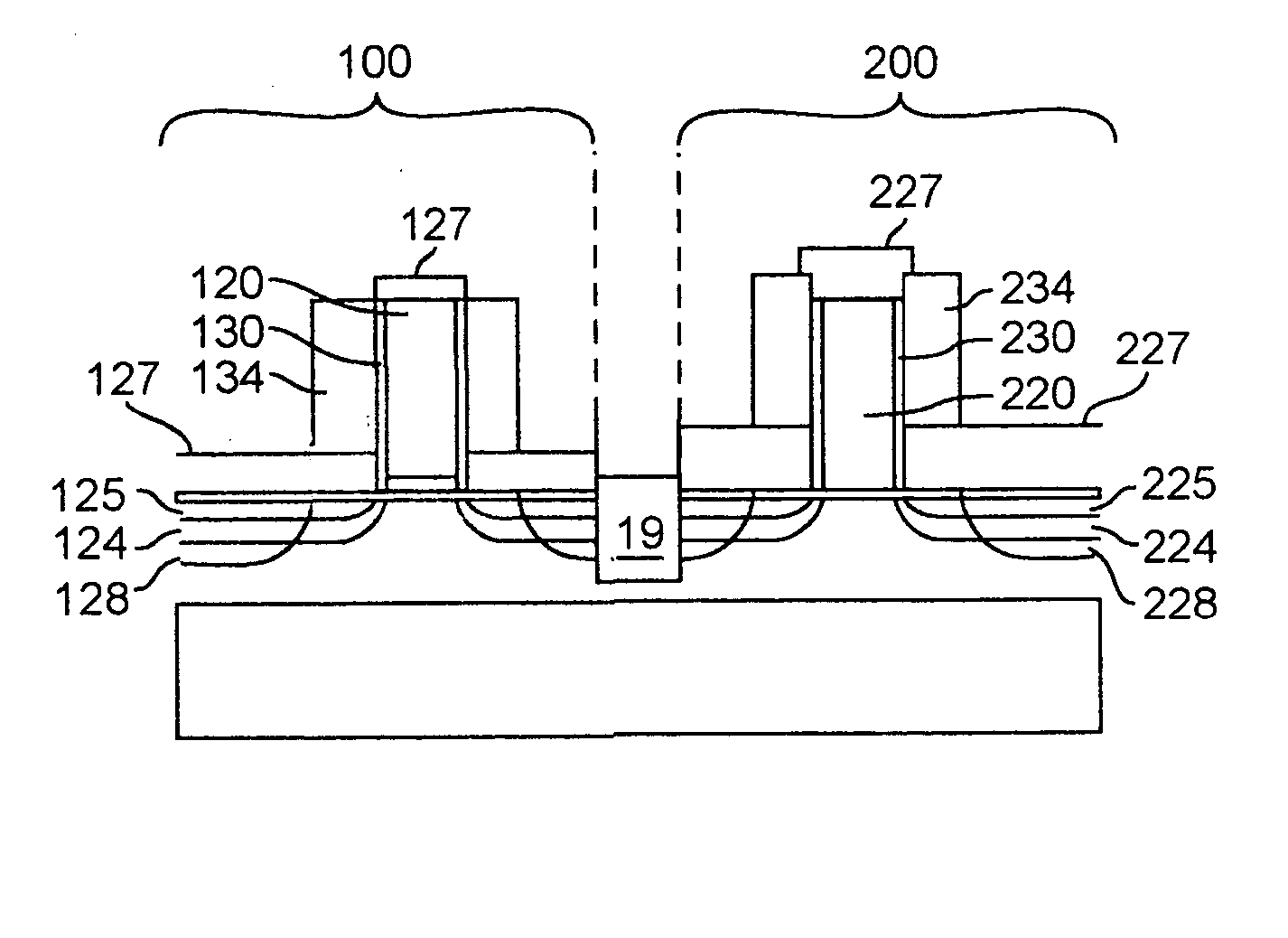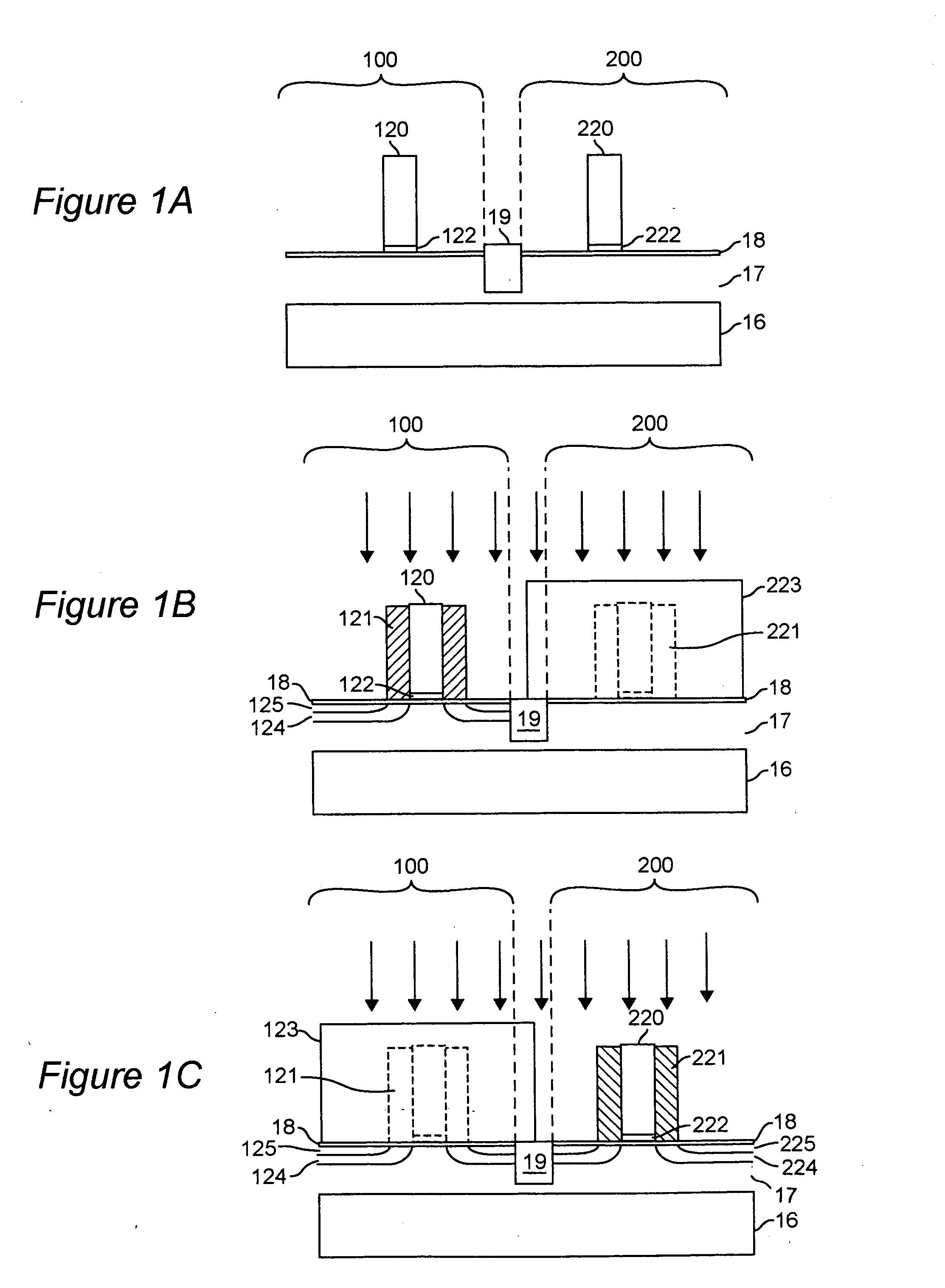Ultra-thin Si channel CMOS with improved series resistance
- Summary
- Abstract
- Description
- Claims
- Application Information
AI Technical Summary
Benefits of technology
Problems solved by technology
Method used
Image
Examples
Embodiment Construction
[0032] Referring now to the drawings, and more particularly to FIGS. 1a-1f, a method over which the invention provides improvements is shown for forming a CMOS pair. FIGS. 1a-1f are arranged to provide an enhanced understanding of the invention and no portion thereof is admitted to be prior art as to the present invention. The process shown in these steps exhibits particular deficiencies which the present invention successfully avoids. More specifically, FIG. 1a is a cross-sectional view of an SOI device including an Si substrate 16, isolation layer 17, oxide layer 18, gate dielectrics 122, 222, and a patterned gate stacks 120, 220. FIG. 1b illustrates the next step in this process, where spacers 121 are formed in the nFET region 100 and spacers 221 are formed over the pFET region 200. The pFET region 200 is protected using a block out mask 223 while the nFET region 100 has extensions 125 and halos 124 implanted. The mask 223 is removed from the pFET region 200 and another block mas...
PUM
 Login to View More
Login to View More Abstract
Description
Claims
Application Information
 Login to View More
Login to View More - R&D
- Intellectual Property
- Life Sciences
- Materials
- Tech Scout
- Unparalleled Data Quality
- Higher Quality Content
- 60% Fewer Hallucinations
Browse by: Latest US Patents, China's latest patents, Technical Efficacy Thesaurus, Application Domain, Technology Topic, Popular Technical Reports.
© 2025 PatSnap. All rights reserved.Legal|Privacy policy|Modern Slavery Act Transparency Statement|Sitemap|About US| Contact US: help@patsnap.com



